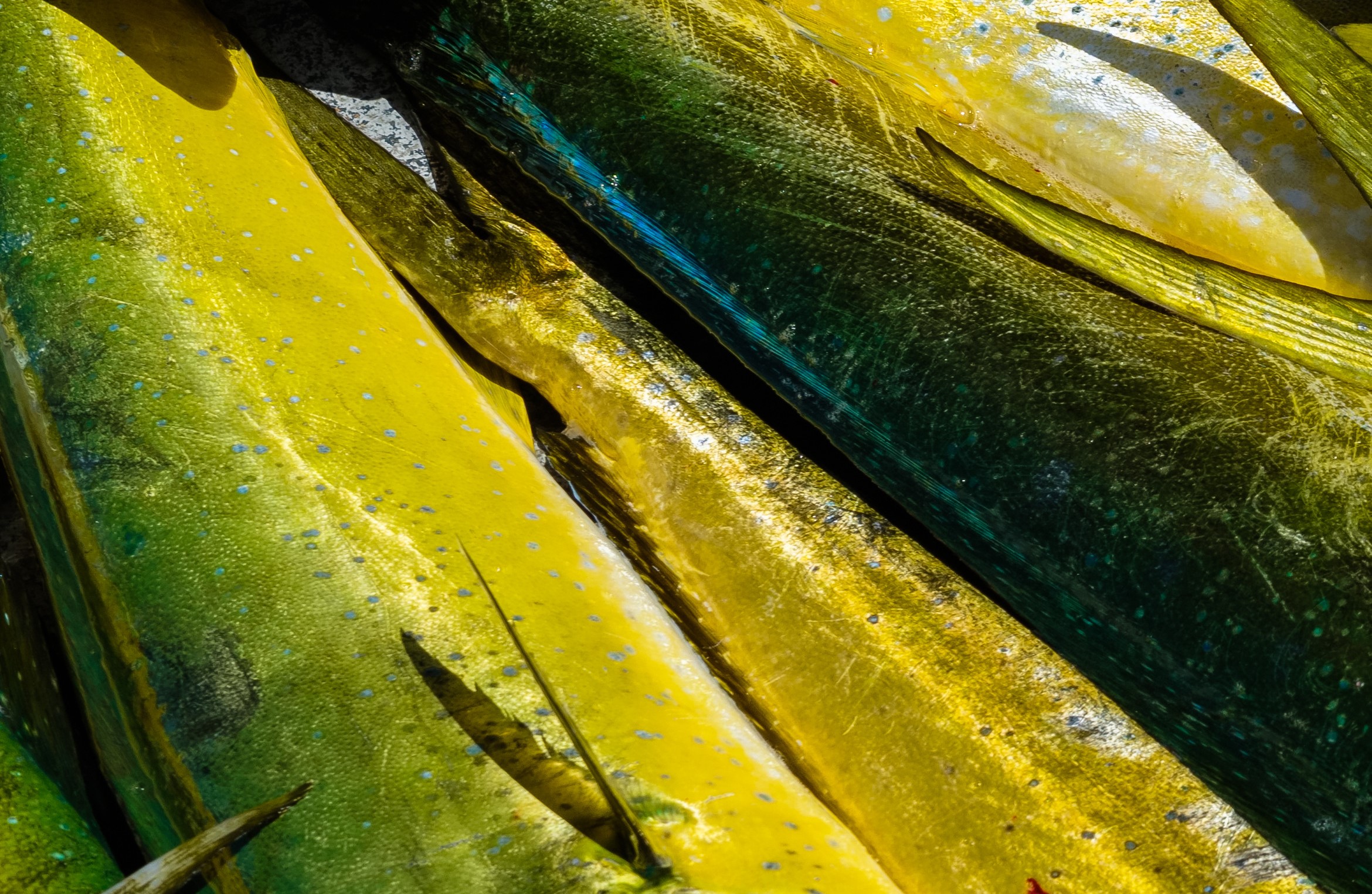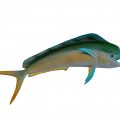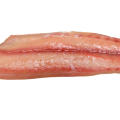Mahi Mahi have scales and fins. Mahi Mahi is also known as dolphin fish. Since it’s common knowledge that dolphins don’t have scales, it’s worth questioning if that’s the case for Mahi Mahi too. Mahi Mahi is entirely different from dolphins; unlike dolphins, they have scales.

What kind of scales does Mahi Mahi have?
Mahi Mahi, scientifically known as Coryphaena hippurus, is a fish from the Actinopterygii class under the Osteichthyes superclass. Actinopterygii is the largest class of fishes, and they are known as ray-finned fishes. All members of this class have scales. The scales can be cycloid, ganoid, or ctenoid. The most advanced actinopterygians, called teleosts, have leptoid scales.
For Mahi Mahi, the type of scales they have is cycloid. These scales consist of a collagenous layer of ganoid or cosmoid scales. Ganoid scales are hard or bony, while cosmoids comprise a cosmine layer. Cycloid scales have two distinct regions: the outer is made from the bony layer containing calcium-based salts, and the inner is fibrous.
Their entire body is covered with it, overlapping from head to tail. These scales have smooth outer edges and no spines along the free edges. Their shape and how they are arranged on the fish’s body help it reduce drag and fluid friction when swimming, thus helping it swim faster.
Does Mahi Mahi have fins?
Mahi Mahi is a ray-finned fish. All seven types of fins are present in their bodies. They have long dorsal fins that extend through almost the entire length of their bodies. This dorsal fin is iridescent blue in color, which gives them a stunning appearance. The anal fins lie on the underside of the fish’s body, starting halfway down the belly and extending down to the tail. These anal fins are sharp and concave in shape. That aside, they have two pectoral fins (behind the underside of the head) and two pelvic fins (on both sides of the body). Their caudal fin is forked.
Is Mahi Mahi a Kosher fish?
The fish that have removable scales are classified as kosher fish. While it is not the fish whose name usually pops up in the list of koshers and is not typically eaten in kosher homes, it can be considered a clean fish according to the Bible guidelines. However, whether Mahi Mahi is kosher also depends on the day the fish is handled and processed before cooking.
Strictly speaking, Mahi Mahi is a predatory fish living near the water’s top. Its diet includes flying fish, crabs, squid, mackerel, and other forage fish. All these considered, it would be an “unclean” fish. However, you can buy Mahi Mahi without scales and fins, which is okay for those who keep kosher.
The body of a Mahi Mahi is in two sections, one considered kosher, the other not. One part is similar to the meat of most fish, while the other contains red meat that falls under the same category as beef, making it non-kosher. So if you keep kosher, you have to be careful of this. Ensure the fish is fresh and the red meat is removed during processing. If you see any signs of blood in the final product, it could indicate that some portion of the red meat is still left.
Is Mahi Mahi the same as Dolphin?
Mahi Mahi is also known as dolphinfish, so it is often confused with dolphins. However, dolphins are mammals, while Mahi Mahi is actual bony fish under the Actinopterygii class. So they are entirely different species and classes of fish.
Dolphins are warm-blooded mammals, just like us. Despite being aquatic, they don’t breathe with their gills but rather with their lungs. They give birth to live baby dolphins through their reproductive organs and feed their babies milk from their mammary glands. As mammals should, they also have body hair right around their blowhole. Dolphins are considerably more intelligent than other classes in the Chordata phylum.
On the other hand, dolphinfish or Mahi Mahi are fish, not mammals. They breathe with their gills, and their lungs are comparatively less developed. They reproduce by laying eggs and have no mammary glands to feed their young from. They have no body hair, but they have scales, unlike dolphins.
Why is Mahi Mahi called dolphinfish?
These fish were named dolphinfish because they have a habit of swimming ahead of sailing ships, which is also a habit that dolphins have. Moreover, there are mild similarities in the appearance of both. However, when dolphinfish began to be sold commercially, it caused quite a bit of confusion. They were named “Mahi Mahi,” a Hawaiian word to avoid this confusion. The word translates to “strong-strong” or very strong. Even now, many people confuse the two or consider Mahi Mahi, the same species as dolphins. That’s why the name Mahi Mahi is more widely used these days.
Is Mahi Mahi the same as Dorado?
Mahi Mahi is also called Dorado, which is again confused with Salminus brasiliensis, also called Dorado or Dourado.
Mahi Mahi and Salminus are called dorado because of the golden, shiny coloration in their bodies; the word “dorado” means “golden” in Spanish. Both are fishes under the Actinopterygii class. However, the two belong to different orders and have many other dissimilarities. Salminus is freshwater fish, whereas Mahi Mahi is saltwater fish.
Salminus and Mahi Mahi are fish in the Characiformes order. They have a large head, strong jaws, and sharp teeth. They are usually much smaller in size compared to Mahi Mahi. While both have cycloid scales, Salminus have small scales that cover their whole body.
In conclusion, Mahi Mahi has cycloid scales, which are also removable.











